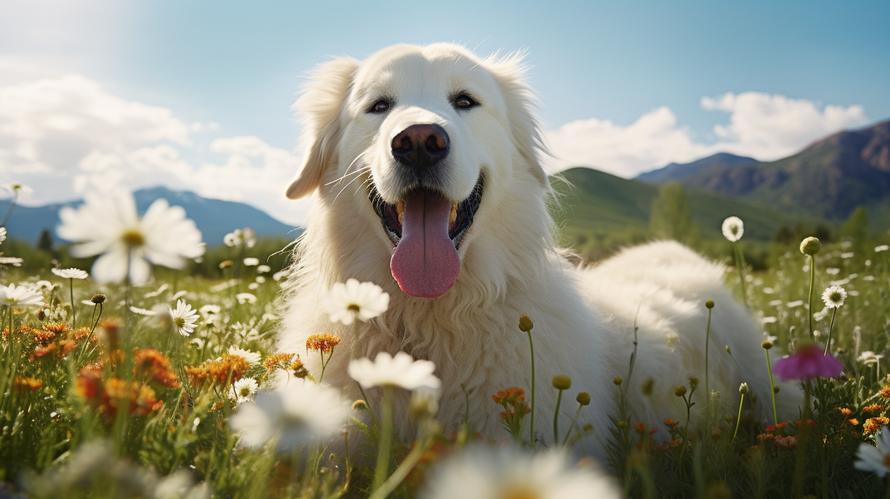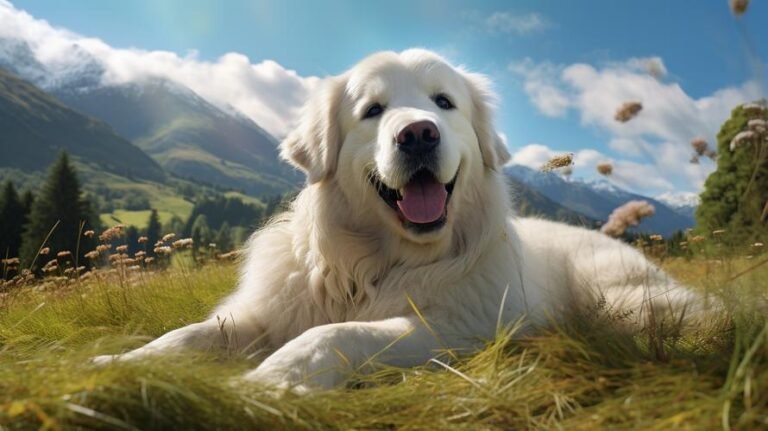You might be surprised to learn that the giant, fluffy Great Pyrenees dogs you see in the park weren’t always the pampered pets they are today. Don’t let their lavish, white coats fool you — these dogs have a centuries-long history working as no-nonsense sheepdog guards in the Pyrenees Mountains, on the border between Spain and France. Their size, strength, and calm demeanor made them perfect for protecting flocks, even from the huge predators like wolves and bears. Isn’t it impressive?
Understanding this heritage is crucial when considering what to feed your Great Pyrenees. These dogs were bred for hard work in rugged mountain conditions and continue to have unique nutritional needs.
The good news is that, whether you’re a new proud Pyr parent or an old hand at taking care of these gentle giants, we’re going to journey together to find the best food for a Great Pyrenees. Learning about your canine companion’s nutritional needs is both interesting and essential to ensure they live a happy and healthy life.
First things first, let’s have a look at what sets a Great Pyrenee’s diet apart. Great Pyrenees need a balanced diet rich in protein, carbohydrates, fats, vitamins, and minerals – just like us! However, because Great Pyrenees are big dogs with massive bones and muscles, they need more of these nutrients than smaller dog breeds.
Protein is a vital element in your Pyr’s diet. It plays a crucial role in developing and maintaining their muscular strength and structure. Make sure the protein source is high-quality; look for whole meats like chicken, beef, fish, or lamb as the first ingredient in the dog food. Avoid fillers like corn, soy, and wheat gluten which provide less nutritious protein sources.
Carbohydrates provide essential energy but remember, not all carbs are created equal. Look for complex carbs like sweet potatoes, peas, and brown rice which break down slowly and provide long-lasting energy. Avoid simple carbs like sugar and white flour which can cause spikes in blood sugar and lead to obesity.
Fats are not bad. In fact, healthy fats furnish energy, nourish your dog’s skin and hair, and support brain health. Omega-3 and Omega-6 fatty acids from fish oil or flaxseed are a fantastic source of good fats.
Vitamins play a vital role in all the body’s functions. They aid everything from eyesight to bone health. Minerals like calcium and phosphorus are necessary for strong bones and teeth.
Now you’re equipped with a basic understanding of your Pyr’s dietary needs. So, let’s delve into the specific types of food that will give your dog a balanced diet.
Commercially available dog food often comes in two forms: dry kibble and wet canned food. Both have pros and cons.
Dry kibble is convenient, can be left out for longer periods, and helps to clean your Pyr’s teeth as they chew. Wet food, on the other hand, is more palatable for picky eaters, contains more water (can help keep your dog hydrated), and is great for dogs with dental issues.
Next on the menu is home-cooked food. If you’ve got the time and love to cook your dog a meal, it can be a great way to know exactly what’s in your Pyr’s food. But remember, it’s tricky to get the right balance of nutrients in home-cooked meals so consult your vet or a canine nutritionist before embarking on this culinary adventure.
Finally, let’s talk raw food, or the ‘BARF’ diet (Biologically Appropriate Raw Food). This diet mimics what dogs would eat in the wild: raw meat, bones, fruits, and vegetables. Advocates rave about shinier coats, cleaner teeth, and higher energy levels. But, raw food comes with risks, like bacterial contamination and an unbalanced diet. Always seek veterinary advice before starting a raw food regimen.
The best food for your Great Pyrenees might not be the same as someone else’s. It relies on your dog’s age, size, health status, and lifestyle factors. For instance, a higher calorie intake might be adequate for a working Pyr or a young, active dog but could lead to unhealthy weight gain in a senior or less active dog.
Remember, changes in diet should be made gradually to prevent stomach upset. Start by incorporating a small amount of the new food into your dog’s current food, slowly increasing the proportion over about a week.
I hope this has provided you with valuable knowledge on the best food for your precious Great Pyrenees. Feeding your Pyr the right diet not only keeps them feeling vigorous, it also strengthens your bond as you demonstrate love and care for their well-being. Always remember, food is essential but nothing beats a good-old belly rub and some quality playtime with these fascinating creatures. Bon appetit!



